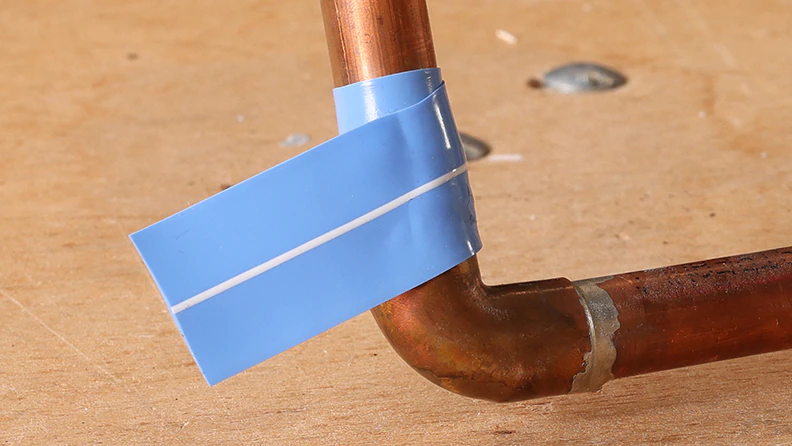Plumbing emergencies can strike at any time, and when they do, swift action is essential to prevent further damage to your home. One of the most common and potentially damaging issues is a leak. Whether it’s a burst pipe, a leaking joint, or a crack in the plumbing, knowing how to temporarily stop the leak until the plumber arrives is crucial. In this comprehensive guide, we will walk you through the steps and methods to effectively manage a plumbing leak and safeguard your property.
Identify the Source of the Leak:
Before attempting any repairs, pinpointing the source of the leak is paramount. Inspect the affected area for visible signs of damage and turn off the water supply to that specific section if possible.
This initial step helps contain the problem and allows you to focus on the necessary repairs.
Turn Off the Water Supply:
Locate the main water shut-off valve for your home and turn it clockwise to stop the water flow. If the leak is isolated to a particular appliance or area, find the corresponding shut-off valve and turn it off.
This step is crucial to prevent further water damage while you address the issue.
Use Plumbing Tape:
Plumbing tape, also known as Teflon tape, is an invaluable tool for temporarily sealing small leaks. Wrap the tape tightly around the damaged section, ensuring a secure and watertight seal.
This method is effective for leaks in pipe joints or fittings and provides a quick fix until professional help arrives.
Apply a Pipe Clamp:
For more substantial leaks or cracks in the pipes, a pipe clamp can provide a reliable solution. Place the clamp over the damaged area and tighten the screws to compress the pipe, effectively stopping the leak.
Regularly check the clamp for tightness and make adjustments if necessary.
Utilize Epoxy Putty:
Epoxy putty is a versatile and durable option for sealing leaks in pipes. Knead the putty according to the manufacturer’s instructions and apply it directly to the leak.
Mold the putty to cover the damaged area and allow it to cure. Epoxy putty provides a sturdy and long-lasting temporary fix.
Plug Small Holes with Rubber and Hose Clamps:
For pinhole leaks, a combination of rubber and hose clamps can be effective. Place a rubber patch or sheet over the leak and secure it tightly with hose clamps.
This method is particularly useful for small, pinpoint leaks and provides a quick and secure solution.
Use a Rubber or Silicone Repair Tape:
Specialized repair tapes made of rubber or silicone are designed for quick and efficient sealing of leaks. Stretch the tape tightly around the damaged section, ensuring complete coverage.
This temporary fix can withstand water pressure and buy you time until professional repairs can be arranged.
Employ a Bucket or Container:
In situations where the leak is causing water to pool, placing a bucket or container under the leak can prevent water damage to your home.
Regularly check and empty the container as needed. While this doesn’t fix the leak, it minimizes the immediate impact on your property.
Elevate Items from the Water:
If the leak is substantial and causing water to spread, take proactive measures to protect your belongings.
Elevate furniture and valuables to higher ground to prevent them from getting damaged. This simple step can make a significant difference in minimizing losses.
FAQs:
Q1: Can I use duct tape to fix a leak?
A1: While duct tape may provide a temporary fix for small leaks, it’s not recommended for plumbing repairs. Plumbing tape or other specialized materials offer more reliable and lasting solutions.
Q2: How long can these temporary fixes last?
A2: The duration of temporary fixes depends on the severity of the leak and the chosen method. It’s crucial to schedule professional plumbing repairs as soon as possible for a permanent solution.
Q3: Is it necessary to turn off the main water supply for a minor leak?
A3: Turning off the main water supply is a precautionary measure to prevent further damage. If the leak is isolated, shutting off the water to the affected area may be sufficient.
Q4: Can I use household items to stop a leak in an emergency?
A4: Yes, items like rubber, hose clamps, and buckets can be used for temporary fixes. However, professional plumbing assistance is essential for a lasting solution and to address the root cause of the issue.
Conclusion:
Knowing how to stop a leak until the plumber arrives is a valuable skill that can save you from extensive water damage and costly repairs. The methods outlined in this guide provide effective temporary solutions, but it’s crucial to recognize their limitations. Seeking professional plumbing assistance promptly is essential to address the underlying issue and ensure a permanent fix. Always prioritize safety and take necessary precautions when dealing with plumbing emergencies, and remember that these temporary measures are just that – temporary.

A group of home improvement enthusiasts and bathroom design experts, combines in-depth knowledge and a shared passion to deliver engaging, informative content that guides readers through the world of bathroom innovation and style.

Leave a Reply